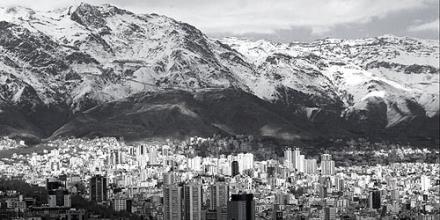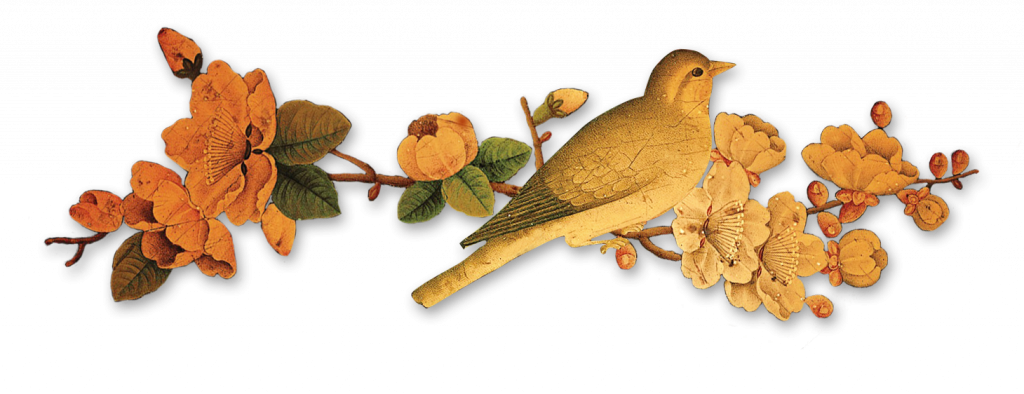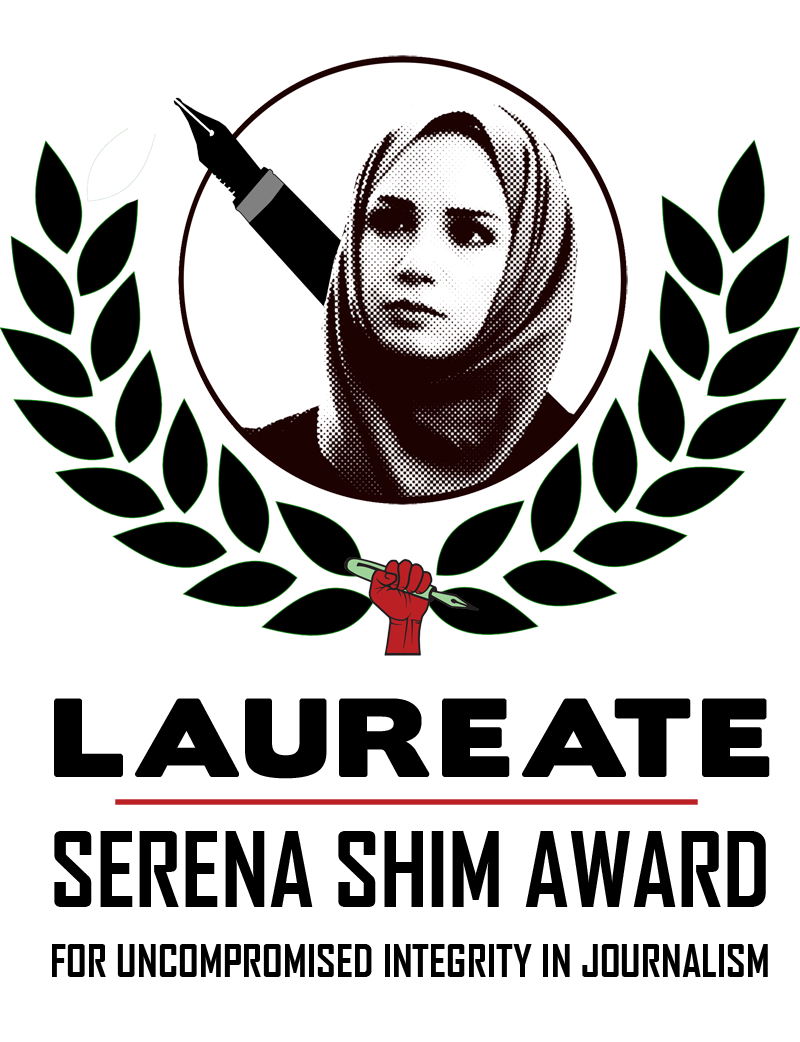
This piece was written for an Association of Iranian American Writers’ reading at “One Day: A Collective Narrative of Tehran,” at San Francisco’s Intersection for the Arts. Exhibition runs through January 23, 2009. theintersection.org
I am a Tehran girl. I was born in Tehran’s Amirieh neighborhood, but moved to Tehran Pars with my family before I turned one. The quiet and sleepy suburban neighborhood had all that was ideal about raising children, I guess. The perfect new streets, all straight and numbered, were signs that this was one of the first planned neighborhoods of Tehran. It had amenities no other neighborhood had as yet, a huge playground, a modern public swimming pool, a drive-in cinema, two adjacent elementary schools for girls and boys, and even aspirations for a casino!
Our house was near a stone cutting factory, sang-bori. Everyday at noon, just before hearing the azaan from the mosque nearby, we could hear a siren which announced lunch break for the workers. The paved road leading to our house ended right after our house and the rest was nothing but vast fields, covered in untouched snow during winter months, and covered with wild daisies and brambles during the rest of the year. It feels surreal now to remember that we used to see herds of sheep and camels in our neighborhood all the time. They would come around to graze and rest, from where to where, I do not know. I only know that in the quiet neighborhood, you could never miss the sound of the bells around the camels’ necks, heralding their arrival, creating a frenzy among the children who would run out to stand watch all around the camel herd. I remember my mother offering the man cold water and food sometimes. I also remember riding on the camels occasionally, when the shotorban would let me. I remember the mixed exhilaration and fear of being raised several meters into the air and watching my sisters and my playmates from that height. I remember the nervous and gleeful laughter of us all.
Tehran felt big even when it was a lot smaller, but as I grew up and learned to move about independently, it became less intimidating to navigate. I knew it well in my neighborhood and places I had to go by myself, and slowly, I started to learn it well in other areas, understanding its dimensions and borders, and even something about how to survive in it. I learnt, for example, as a young woman, how to walk straight and alert, with clothing that was not too suggestive, through certain parts of the city in order to make safe passage from men who took liberties with women’s breasts and buttocks in broad day light. I learned to have a sense of humor about their lewd words, matalak, uttered at me and all the other women going by. I learned the bus system, the way catching a taxi worked, and how and where to sit in a taxi cab to avoid the leg of the man to my right or the elbow of the cab driver, eagerly pushing into my left breast and petting my left thigh during each gear shift.
Tehran was my beautiful ugly city, sprawling at the bottom of so many mountains surrounding it, providing nonstop entertainment and fascination to anyone who wanted to know it. I lived side by side of many who had been attracted to it from far away places of the world, living it and loving it. Did Tehran have cemeteries, too? Did it have prisons and torture chambers, too? I didn’t know. The question never occurred to me.
Tehran was the city in which I fell in love for the first time, and all the other times after it. I cried my tears talking to the streams of water running through shallow canals, joob, from North to South, whispering my longings to the trees lining its Pahlavi Avenue. Those same streets saw my wedding motorcade one day, where our old Jian was decorated with flowers and ribbons, followed by friends and families’ better cars, escorting us to our honeymoon.
I was a real Tehran girl.
Leaving Tehran in 1978, the last image of looking back and taking in Mehrabad Airport has remained fresh and at times surreal in my mind. This was an image I had to come back to many, many times, asking myself in desperation whether it was the same city I saw in flames and chaos just a few months later on ABC News. I had left what I had thought was my peaceful and safe city, full of happy friends and family, only to see people who resembled them walking down the same streets of memory and love, chanting slogans of protest, getting beaten up and shot at, with a familiar looking boys’ bloody hand pointed at the camera. In the months to come, I could recognize less and less of the city in the images and even less of the people in it.
I returned to Iran in April, 1980. I managed to catch the last glimpses of the urban utopia Tehran had become to so many people who had become revolutionaries. I remember walking on Shahreza, Enghelab Avenue, across from Tehran University, watching the never-ending rows of books and tapes and newspapers offered by educated, green jacket clad peddlers, feeling inadequate in my ignorance about the left and about Islam. The utopian state didn’t last, for soon I also had to witness the violent crackdown on newspaper girls and the book peddlers. My mind was locked in a perpetual state of fear with news of relatives captured, some executed for being generals in Shah’s army, or for distributing flyers at a rally, the difference never understood.
I remember the day Iraqi missiles hit Mehrabad Airport. I was at work and the distant sound of a blast did little to convey the significance of what was about to come to my inexperienced mind. Witnessing the ensuing curfew and watching pickup trucks carrying gun wielding young men headed for the war front needed months to register and settle in my mind and to convey the reality of what was up ahead, a war. I remember having to learn to stand in lines for fuel, for bread, and for tissue paper and milk. I had to learn to get used to hearing gun shots, too. One day we were having tea on the terrace and the sound of three gun shuts close by had all of us frozen. Some government official had been assassinated steps away in broad daylight.
I left Iran again in 1981, unable to return until 1988. During these years, family and friends had been imprisoned, executed, or forced to flea Iran. My heart was parked in a perpetual state of longing, sadness, and fear for Iran. During these years I finally knew Tehran had cemeteries and prisons.
I returned to Tehran in 1992. My city had changed. Its parks were fenced in, its streets were covered in huge murals, showing images of martyrs and religious leaders, its periphery had grown in reach and population, its air had started to become unbreathable, and its people had changed in appearance and demeanor, somehow seeming shorter, darker, and so much sadder. I remember staying inside the house for several weeks, unable to overcome the fear of facing people I felt I no longer knew. I remember feeling numb as I got dressed properly to leave the house, unable to enjoy any activity, feeling reserved and frightened all the time. What if I said the wrong thing? What if I did the wrong thing? I could get arrested and I wouldn’t know what to say and do to get out. I went to find my childhood home and found the neighborhood changed and deteriorated, ugly, and menacing. Nothing felt familiar, nothing. Where is my city, I wondered more than once.
Gradually, though, Tehran grew on me again. It was like it opened its arms, somehow, and let me in. I started to re-learn its streets and neighborhoods, its inadequate urban transportation system, and to push the scaly exterior aside and put my hand on its soft and velveteen heart. I fell in love with the ugly beauty all over again.
I tried, without much success, to save its last standing trees. I was a determined army of one, on a mission. I learned a lot about corruption and greed, but I was also able to give a few jolts of awareness and resistance to the men carrying the axes and pushing the green parrots and sparrows, gonjishks, out of Tehran forever.
My biggest accomplishment during this time, however, was the two new Tehranis in my family, my sons. Now they had to learn the city and fall head over heels in love with it. Now they had to learn the walk, the talk, and the tension and excitement that lived under the beautiful ugly’s skin. Now they had to learn its new rules, of illegal parties and illegal kisses and illegal longing. Now they had to learn to negotiate their way out of an arrest or how to spend a night in a detention center cell. They are Tehran Boys now.
I watched the June uprising on YouTube this time, trying to make sense of what was happening in Tehran, yet again. Only this time, I had the Tehran Boys nearby, sharing my shock and grief, feeling the excitement and pride, and helping me identify our neighborhoods through the smoke, crowds, rocks, and charging police bikers.
“Is that Vanak’s Shiraz Square?!!” Asked the Tehran Girl.
“Yes, I think I see the sign for “Bonab Kabab,” said one of the Tehran Boys.






